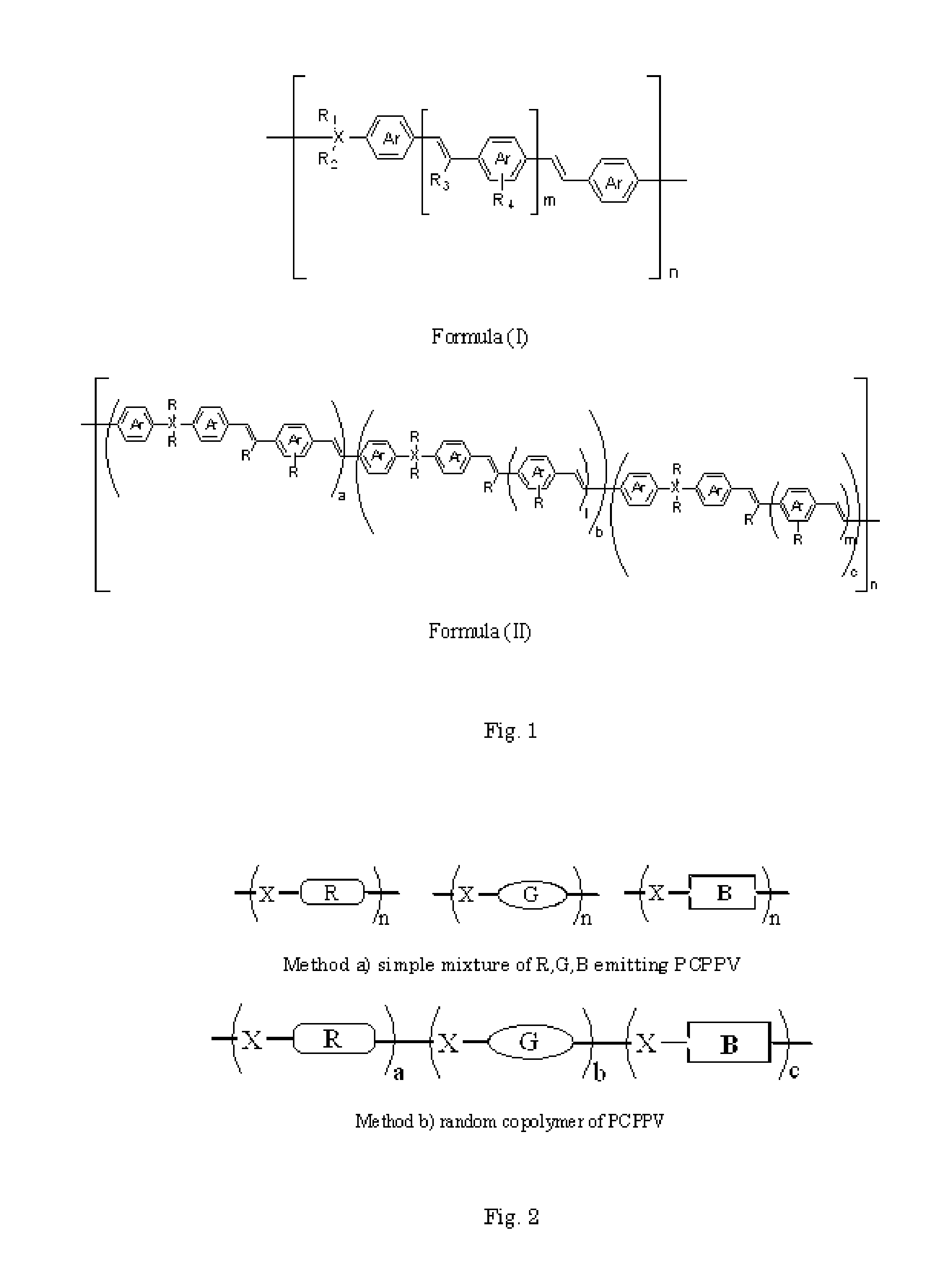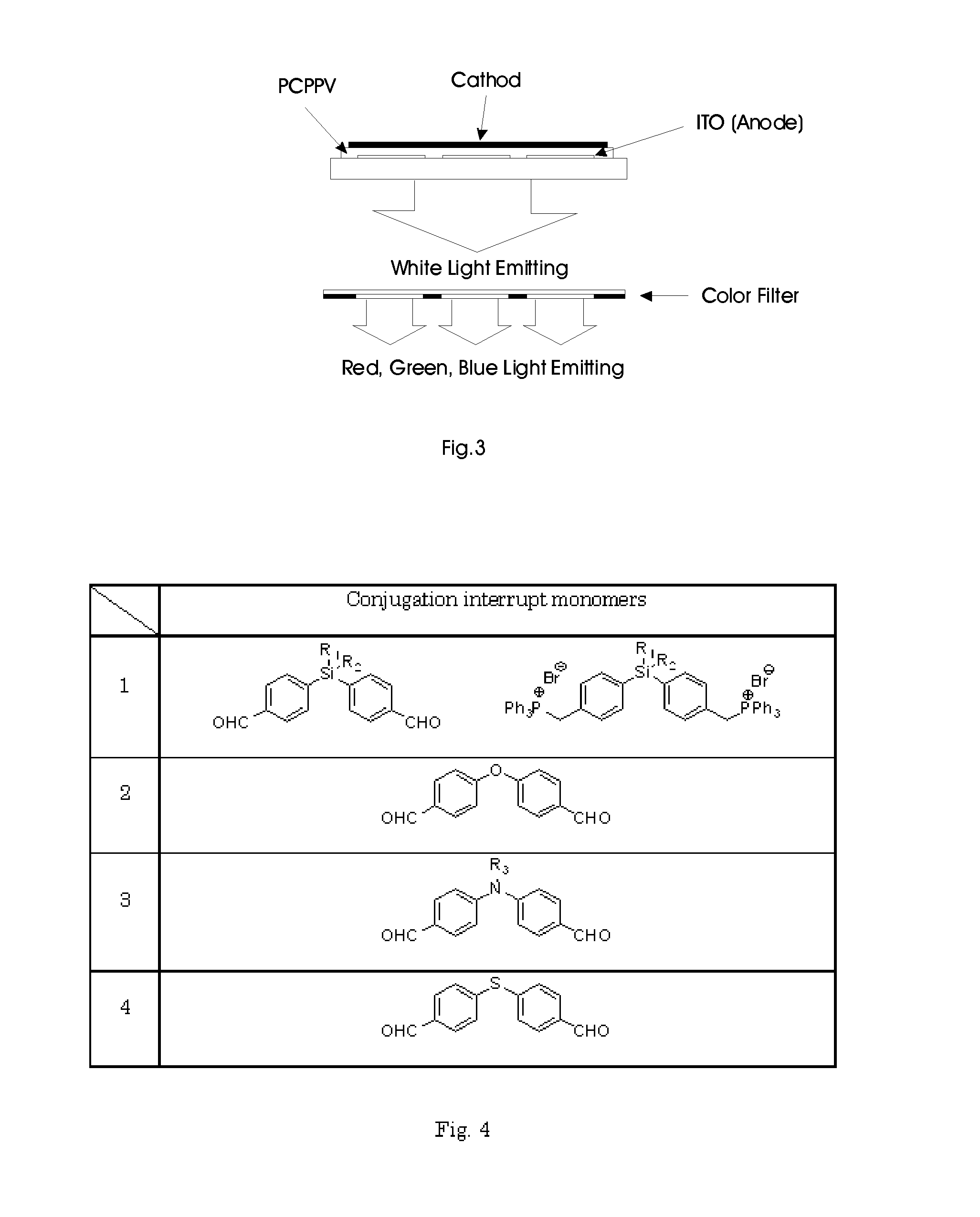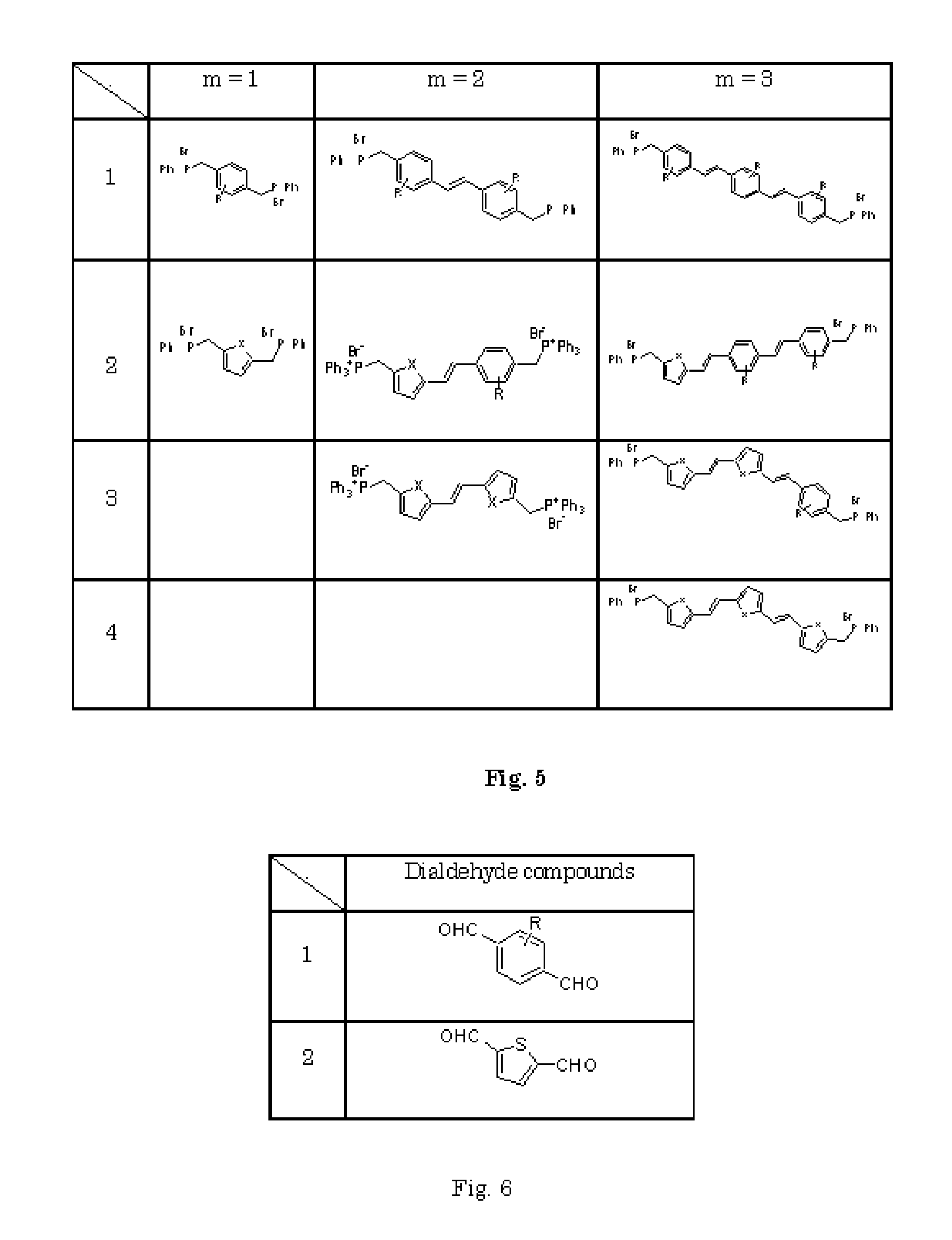Emitting Color Controllable Polymers for Organic Light Emitting Diode Display Based on Partially Conjugated PPV Copolymers
a technology of organic light-emitting diodes and copolymers, which is applied in the direction of luminescent compositions, energy-saving lighting, sustainable buildings, etc., can solve the problem of voltage-dependent light-emitting color not being a desirable functionality of existing oleds, and achieve the effect of effectively controlling the emission of color
- Summary
- Abstract
- Description
- Claims
- Application Information
AI Technical Summary
Benefits of technology
Problems solved by technology
Method used
Image
Examples
Embodiment Construction
[0024] The present invention is on the development of R, G, B and white color light emitting polymer PCPPV derivatives containing silicon, oxygen, nitrogen, or sulfur having general formulation (I) of FIG. 1.
[0025] Here, X is an atom that can separate the conjugation such as silicon, nitrogen, oxygen, or sulfur atom. R1 and R2 is independently hydrogen atom, aromatic group, branched or straight alkyl chain having from 1 to 10 carbon atoms, substituted or unsubstituted by aryl, substituted or unsubstituted by cycloalkyl, perfluoronated alkyl chain having from 1 to 10 carbon atoms, or nothing. R3 is an aromatic, CN, branched or straight alkyl chain having from 1 to 10 carbon atoms, substituted or unsubstituted by aryl, substituted or unsubstituted by cycloalkyl, or perfluoronated alkyl chain having from 1 to 10 carbon atoms. R4 is CN, hydroxy substituted branched or straight alkyl chain having from 1 to 10 carbon atoms, branched or straight alkyl chain having from 1 to 10 carbon atom...
PUM
| Property | Measurement | Unit |
|---|---|---|
| brightness | aaaaa | aaaaa |
| power conversion efficiency | aaaaa | aaaaa |
| colors | aaaaa | aaaaa |
Abstract
Description
Claims
Application Information
 Login to View More
Login to View More - R&D
- Intellectual Property
- Life Sciences
- Materials
- Tech Scout
- Unparalleled Data Quality
- Higher Quality Content
- 60% Fewer Hallucinations
Browse by: Latest US Patents, China's latest patents, Technical Efficacy Thesaurus, Application Domain, Technology Topic, Popular Technical Reports.
© 2025 PatSnap. All rights reserved.Legal|Privacy policy|Modern Slavery Act Transparency Statement|Sitemap|About US| Contact US: help@patsnap.com



